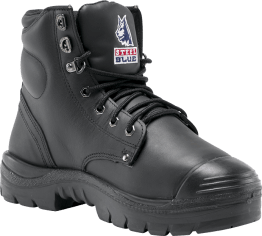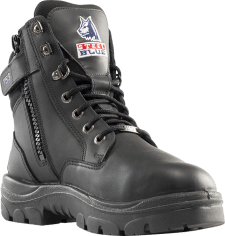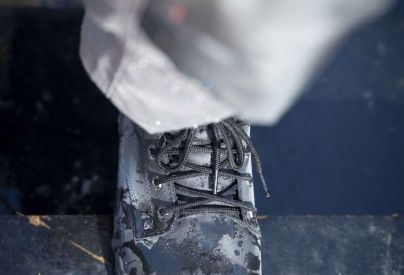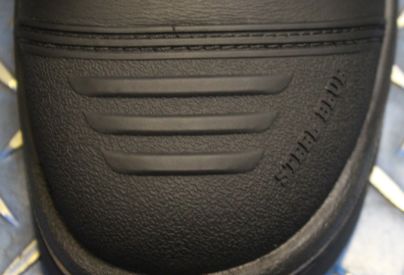Is Metatarsal Protection a requirement in safety boots?

When you work on your feet all day, you know how important toe protection is. But while steel caps protect your toes, the tops of your feet are still at risk from dropped or rolling objects.
One slight misstep when lifting, shifting or carrying equipment can sideline you for months.
Metatarsal protection in safety boots significantly reduces those risks.
In this post, we’re diving into the role of metatarsal protection and unpacking the technology inside the leading met guard boots.
What are metatarsal guards?
Metatarsal guards, also called met guards, protect the delicate metatarsal bones on top of your midfoot.
Met guard boots plates provide an extra layer of safety against acute injuries and crushing.
They are mostly required in roles that put you at risk from lifting or rolling heavy objects, especially those made of metal. Think loaded drums, moving vehicles, scaffolding, heavy tools, or construction material.
Steel Blue Met-Guard boots are especially popular with contractors, demolition crews, scaffolders and heavy engineers.
There’s an easy test to determine whether your job requires metatarsal boots. Keep reading to learn more.
The two types of met guards
- Internal: Integrated plates made of innovative composite materials
As safety boot manufacturers continue to innovate and improve their designs, integrated metatarsal guards are becoming more common.
- External: Outer guards made of metal or reinforced plastic that go over work boots
Outer met guards tend to be cumbersome, posing a potential tripping hazard and catching on each other as you walk.

Are metatarsal guards a requirement in safety boots?
Risk assessments conducted by individuals or workplaces may call for metatarsal protection in environments where there is a substantial risk of crushing or dropped objects.
However, the risk calculation is broad and a little vague. Determining whether your crew needs metatarsal protection can be tricky.
For example, if you drop a 40-pound bag of sand, the force distribution means you may get away unharmed. But drop a 10-pound crowbar on the wrong spot, and you’ll be lucky to escape a metatarsal fracture.
It’s best to stay on the safe side and provide safety boots with metatarsal protection whenever there is a risk of dropped, rolling or hazardous objects. And the industry agrees: safety boots with integrated met guards are the new face of PPE in the construction, manufacturing and resources sectors.
Steel Blue’s Met-Guard boots make no compromises. The range features built-in protection that keeps the boots lightweight without reducing comfort, support or mobility.
The risks of working in safety boots without metatarsal guards
Dropped objects
An OSHA study indicated that the typical foot injury occurred when a metal object with a median weight of 65 pounds was dropped from four feet.
Crushing
Rolling objects, moving vehicles, and narrow gaps can all cause compression injuries. Metatarsal protection is designed to prevent these crushing injuries on the top of the foot and in the instep.
Molten material
Met guards are more common in foundries, where heavy metal equipment poses a risk to workers’ safety. As an added advantage, the protective composite material shields against burns from errant molten material.
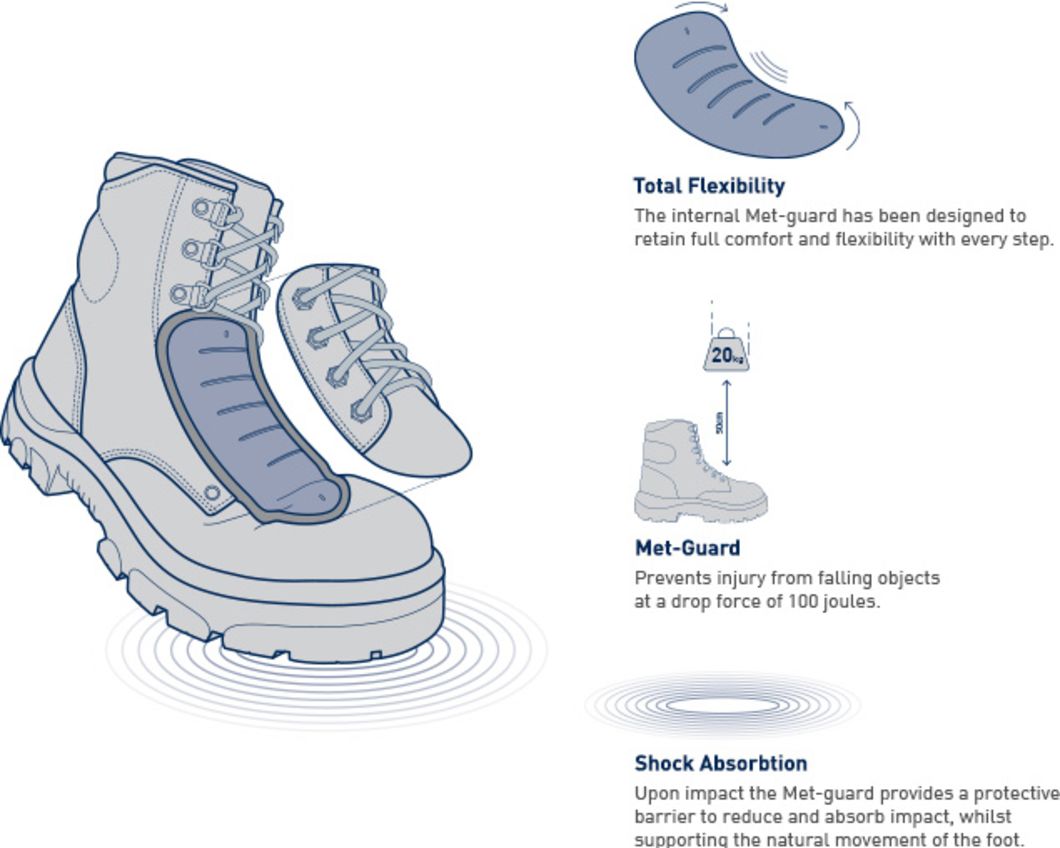
Make the smart and safe choice with Steel Blue Met-Guard safety boots
Our Met-Guard range takes workplace protection to the next level, featuring an integrated metatarsal guard rated to 100 joules.
That’s equivalent to dropping a 50-pound object from a height of 16 inches.
The internal Met-Guard technology is designed to be flexible, offering superior impact protection without compromising on comfort.
Steel Blue safety boots lead the pack in protection and whole-body health.
Browse the full range of Steel Blue safety boots with internal metatarsal protection, or contact your nearest retailer to find out what’s in stock.

